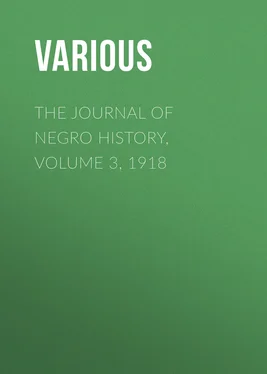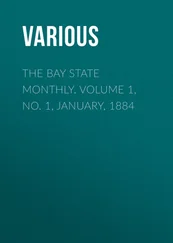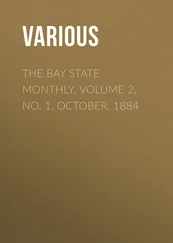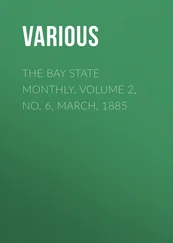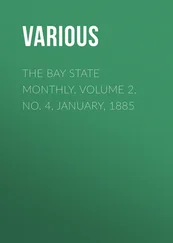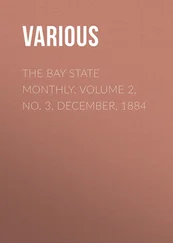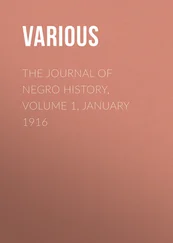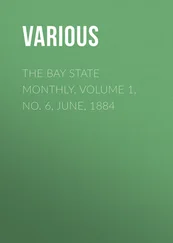Various - The Journal of Negro History, Volume 3, 1918
Здесь есть возможность читать онлайн «Various - The Journal of Negro History, Volume 3, 1918» — ознакомительный отрывок электронной книги совершенно бесплатно, а после прочтения отрывка купить полную версию. В некоторых случаях можно слушать аудио, скачать через торрент в формате fb2 и присутствует краткое содержание. Жанр: foreign_antique, periodic, История, foreign_edu, на английском языке. Описание произведения, (предисловие) а так же отзывы посетителей доступны на портале библиотеки ЛибКат.
- Название:The Journal of Negro History, Volume 3, 1918
- Автор:
- Жанр:
- Год:неизвестен
- ISBN:нет данных
- Рейтинг книги:5 / 5. Голосов: 1
-
Избранное:Добавить в избранное
- Отзывы:
-
Ваша оценка:
- 100
- 1
- 2
- 3
- 4
- 5
The Journal of Negro History, Volume 3, 1918: краткое содержание, описание и аннотация
Предлагаем к чтению аннотацию, описание, краткое содержание или предисловие (зависит от того, что написал сам автор книги «The Journal of Negro History, Volume 3, 1918»). Если вы не нашли необходимую информацию о книге — напишите в комментариях, мы постараемся отыскать её.
The Journal of Negro History, Volume 3, 1918 — читать онлайн ознакомительный отрывок
Ниже представлен текст книги, разбитый по страницам. Система сохранения места последней прочитанной страницы, позволяет с удобством читать онлайн бесплатно книгу «The Journal of Negro History, Volume 3, 1918», без необходимости каждый раз заново искать на чём Вы остановились. Поставьте закладку, и сможете в любой момент перейти на страницу, на которой закончили чтение.
Интервал:
Закладка:
NOTES
The local club of the Association for the Study of Negro Life and History is now making a serious study of Negro American History under the direction of Dr. Carter G. Woodson. The work was begun in November and will be completed in February. The phases of history to be considered are: The Negro in Africa , The Enslavement of the Negro , Patriarchal Slavery in America , Slavery and the Rights of Man , The Reaction against the Negro , Slavery as an Economic Institution , The Free Negro in the United States , The Abolition Movement , The Colonization Project , Slavery and the Constitution , The Negro in the Civil War , The Reconstruction of the Southern States , The Negro in Freedom , The Negro and Social Justice .
Dodd, Mead and Company will soon publish for Professor Benjamin G. Brawley a work entitled The Genius of the Negro . The aim of the book will be to set forth what the Negro has done in literature, art and the like.
Longmans, Green and Company have published The Education of the African Native . This will throw light on the much mooted question as to what the Europeans have done to promote the mental development of the native of the dark continent.
In the seventh volume of the Documentos para la Historia Argentina are found materials bearing on the Comercio de Indias, Consualdo, Comercio de Negros y Extranjeros , 1791-1809.
The June number of the Political Science Quarterly contained an article The Negro Vote in Old New York by D. E. Fox.
The Journal of Negro History
Vol. III—April, 1918—No. 2
BENJAMIN BANNEKER, THE NEGRO MATHEMATICIAN AND ASTRONOMER
The city of Washington very recently celebrated the 125th anniversary of the completion of the survey and laying out of the Federal Territory constituting the District of Columbia. This was executed under the supervision of the famous French civil engineer, Major Pierre Charles L'Enfant, as the head of a commission appointed by George Washington, then president of the United States. Serving as one of the commissioners, sitting in conference with them and performing an important part in the mathematical calculations involved in the survey, was the Negro mathematician and astronomer, Benjamin Banneker. As there did not appear to be during this celebration any disposition to give proper recognition to the scientific work done by Banneker, the writer has thought it opportune to present in this form a brief review of Banneker's life so as to revive an interest in him and point out some of this useful man's important achievements.
On a previous occasion the writer undertook to collect some data with the same object in view, and at that time he addressed a letter to the postmaster at Ellicott City, Maryland, asking to be put in touch with some one of the Ellicott family, who might furnish reliable data on the subject. In this way, correspondence was established with the family of Mrs. Martha Ellicott Tyson, of Baltimore. One of her descendants, Mrs. Tyson Manly, kindly came over from Baltimore, and, calling on the writer at the United States Patent Office, presented him with a copy of the life of Banneker, published in Philadelphia in 1884, and compiled from the papers of Martha Ellicott Tyson, who was the daughter of George Ellicott, a member of the noted Maryland family, who established the business that developed the town of Ellicott City.
Between George Ellicott and Benjamin Banneker, Mrs. Tyson says, there existed "a special sympathy," 144and she further refers to her father as "the warmest friend of that extraordinary man." 145Her father had many of Banneker's manuscripts, from which he intended to compile a biography of his friend, but his unusually busy commercial life afforded him no leisure in which to carry out this much cherished plan. Mrs. Tyson's account, therefore, can be relied upon as coming directly from those who, personally knowing Banneker, and living in the same community in frequent contact with him, had preserved accurate data from which to publish the true record of his life.
On a farm located near the Patapsco Eiver, within about ten miles of the city of Baltimore, in the State of Maryland, on the 9th day of November, 1731, Benjamin Banneker was born. Various accounts are given of his ancestry. One of his biographers states that "there was not a drop of white blood in his veins," another asserts with positiveness that his parents and grandparents were all native Africans. 146In still another sketch of Banneker's life, read before the Maryland Historical Society, on May 1, 1845, it is stated that "Banneker's mother was the child of natives of Africa so that to no admixture of the blood of the white man was he indebted for his peculiar and extraordinary abilities." 147Thomas Jefferson said that Banneker was the "son of a black man born in Africa and a black woman born in the United States." 148
According to Mrs. Tyson's account Banneker's mother and father were Negroes, but his maternal grandmother was a white woman of English birth, who had been legally married to a native African. The antecedent circumstances of this marriage were so unusual as to justify special mention. Mollie Welsh was an English woman of the servant class, employed on a cattle farm in England where a part of her daily duty was the milking of the cows. She was one day charged with having stolen a pail of milk that had, in fact, been kicked over by a cow. The charge seems to have been taken as proved, and in lieu of a severer punishment she was sentenced to be shipped to America. Being unable to pay for her passage she was sold, on her arrival in America, to a tobacco planter on the Patapsco Eiver to serve a term of seven years to pay the cost of her passage from England. At the end of her period of service, this Mollie Welsh, who is described as "a person of exceedingly fair complexion and moderate mental powers," was able to buy a portion of the farm on which she had worked. 149In 1692, she purchased two African slaves from a ship in the Chesapeake Bay near Annapolis. One of these slaves named Bannaky, subsequently Anglicized as Banneker, was the son of an African king, and was stolen by slave dealers on the coast of Africa. 150With these two slaves as her assistants, Mollie Welsh industriously cultivated her farm for a number of years with such gratifying success that she felt impelled afterwards to release her two slaves from bondage. The slave Banneker had gained such favor in the eyes of his owner that she married him directly after releasing him from bondage, notwithstanding the fact that his record for sustained industry had not equalled that of his fellow slave, while serving their owner on her farm—a fact that was perhaps due to Banneker's natural inclination to indulge his royal prerogatives. This Banneker is described as "a man of much intelligence and fine temper, with a very agreeable presence, dignified manner and contemplative habits." 151
There were born of this marriage four children of whom the eldest daughter, Mary, married a native African who had been purchased from a slave ship by another planter in her neighborhood. This slave was of a devout nature, and early became a member of the Church of England, receiving at his baptism the name of Robert. After baptism, Robert's master set him free. It was, therefore, as a free man that he became the husband of Mary Banneker, whose surname he adopted for his own. Four children were born to Robert and Mary Banneker, one boy and three girls, the eldest being Benjamin, the subject of this sketch.
Robert Banneker had evidently formed some of the habits of thrift evinced by his mother-in-law, Mollie Welsh, for it is on record that in 1737 within a few years after receiving his freedom he purchased a farm of 120 acres from Richard Gist, paying for it 17,000 152pounds of tobacco, which in those days served as a legal medium of exchange. This farm, located on the Patapsco Eiver, within about ten miles of the town of Baltimore, thus became the Banneker homestead. Here it was that young Benjamin spent his early years and grew to manhood, assisting his father with the general work of the farm.
Читать дальшеИнтервал:
Закладка:
Похожие книги на «The Journal of Negro History, Volume 3, 1918»
Представляем Вашему вниманию похожие книги на «The Journal of Negro History, Volume 3, 1918» списком для выбора. Мы отобрали схожую по названию и смыслу литературу в надежде предоставить читателям больше вариантов отыскать новые, интересные, ещё непрочитанные произведения.
Обсуждение, отзывы о книге «The Journal of Negro History, Volume 3, 1918» и просто собственные мнения читателей. Оставьте ваши комментарии, напишите, что Вы думаете о произведении, его смысле или главных героях. Укажите что конкретно понравилось, а что нет, и почему Вы так считаете.
